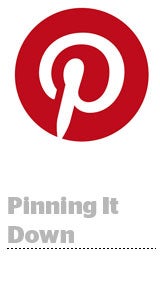 Here’s today’s AdExchanger.com news round-up… Want it by email? Sign-up here.
Here’s today’s AdExchanger.com news round-up… Want it by email? Sign-up here.
Pindustry Focus
Pinterest has reversed a decision from late last year, when it suspended sales support and consultation to brands outside its core retail and CPG verticals. Jack Marshall of The Wall Street Journal reports Pinterest is “now in the early stages of verticalizing our sales organization,” per its recently added sales chief, Jon Kaplan. Pinterest is pitching itself as a way to target consumer “life moments” (like weddings, pregnancies and buying a home), which accompany new, long-term shopping trends, and it’s building out use cases for marketers in the automotive, financial services, fast food and travel industries. More.
Gray Lady’s Peacock Tale
At its NewFront on Monday, The New York Times got excited about virtual reality’s potential for new marketing offers. The publisher announced VR shows, video programming and its new Time[X] lab, which will bring together journalists, technologists and other content creators. CEO Mark Thompson said the future of media relies on experimentation, and The Times is ready to, well, change. “This new slate of video programming presents our advertisers with the perfect opportunity to align with some of The Times’ most creative journalism,” said Sebastian Tomich, SVP-advertising and innovation. More at MediaPost.
Scaled Up
The Oracle spending spree continues. The company dropped $663 million for cloud software firm Textura last week, $50 million for cross-device graph Crosswise the week before and (just yesterday) $532 million for Opower, a cloud infrastructure provider for utility companies. In the age of start-up disruption, we may have overlooked the ridiculous buying power of established tech giants, writes Ron Miller at TechCrunch, also pointing to IBM and Cisco. Now imagine: If Apple (with more than $200 billion in its “rainy day fund”) or Google ($75 billion cash-on-hand) ever face an existential crisis, they could practically consolidate a whole industry.
New-Age(ncy)
What does the agency of the future look like? Ad Age’s Ken Wheaton argues that the future model may actually resemble the 1970s, as marketers ”[push] for rebundling.” The web diversified media and ad-buying, but “as content and distribution platforms become more interdependent on each other, the concept of a media agency [and] a creative agency will once again merge,” says Brad Jakeman, president of Pepsi’s beverage group. Agencies and holding companies like the diversified model (where they can take incremental margins from data, targeting, creative and media), but more and more marketers are asking for a single, transparent rate. Read on.
But Wait, There’s More!
- FCC Rejects Ad Industry Request For Policy Comment Period – MediaPost
- Radioline And Triton To Work On Digital Audio Inventory – release
- Media Delivery Service Valassis To Offer Targeting And Ad Serving – release
- Google’s New Live Posts May Spell Trouble For Twitter – Re/code
- Digital NewFronts 2016 Video Ad Spend Study – IAB
- Automated Guaranteed May Drive Programmatic Growth – release
- New York Searches For Its Anchor Tech Company – NYT
You’re Hired!











